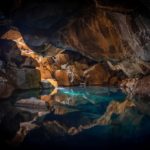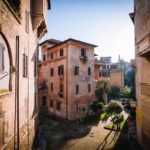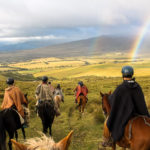Spelunking for Wimps
I work with words. I can tell you that the Latin for cave (spelunca, speluncae f. cave, cavern, grotto, den) derives from the Ancient Greek (spelunx, spelunkos f. cave, cavern). Unless I am climbing steps inside an ancient pyramid or an underground cistern, I avoid tight spaces and dark corridors. I dabbled in archaeology once but the dirt was a little unnerving. You see, I am not much of a rugged adventurist, but I have found a compromise when it comes to caves. I call it “spelunking for wimps.”
Near the medieval town of Carcassonne in France lies an underground natural phenomenon. The Gouffre de Cabrespine are a series of caves carved out by the La Clamoux river over millions of years. The process continues to form the limestone strips that constitute the caverns. Local residents noticed that animals (a dog, ducks, etc.) would enter a river above-ground, then seemingly disappear and reappear in the next village, or next outlet, depending on the time of year. In the 20th century scientists put dye in the river to see where it would reappear.
Even the most timid of travelers can visit this enormous natural hypogeum. Visitors enter via a high, sturdily-constructed walkway, and walk across a vast main cavern. The walkway itself is well-lit, but not far off in the distance there is nothing but blackness. For those battling claustrophobia there is enough brightness to continue and feel at ease.
Unless I am climbing steps inside an ancient pyramid or an underground cistern, I avoid tight spaces and dark corridors. I dabbled in archaeology once but the dirt was a little unnerving.
The lights below and around illuminate massive stalactites and stalagmites. Now, my grade school science teachers told us we shouldn’t touch either formation. It took thousands of years of dripping water to form both the stalactites and stalagmites and the oils from our hands might disturb them. Some tourists I was with did, but the awesome power of nature kept me on my best behavior. Stalactites hang from the ceiling and these ones resemble chandeliers. The cone-like formations rising from the floor though (stalagmites) are so large they look like giants in the background. I imagine a fantasy author would find inspiration here.
After a staircase there are guided paths that bring visitors to separate caves and formations. The atmosphere is one of adventure, even though there are guided paths and signs pointing to an exit. In certain parts of the cave you can hear the La Clamoux River. Sometimes it’s a trickle and other times it sounds like a bubbling brook. Real geologists and speleologists do study this area, mainly in far off, unlit, caverns. For those who have more time and who are a little braver than I, there is an undergrounded, guided safari available.
The tourist office also hosts clean bathrooms, snacks, and geologic souvenirs. So, if your form of spelunking includes a well-lit paths and a clearly marked exit – “spelunking for wimps” and the cave systems at Gouffre de Cabrespine are for you! For more on this natural wonder visit their site.








